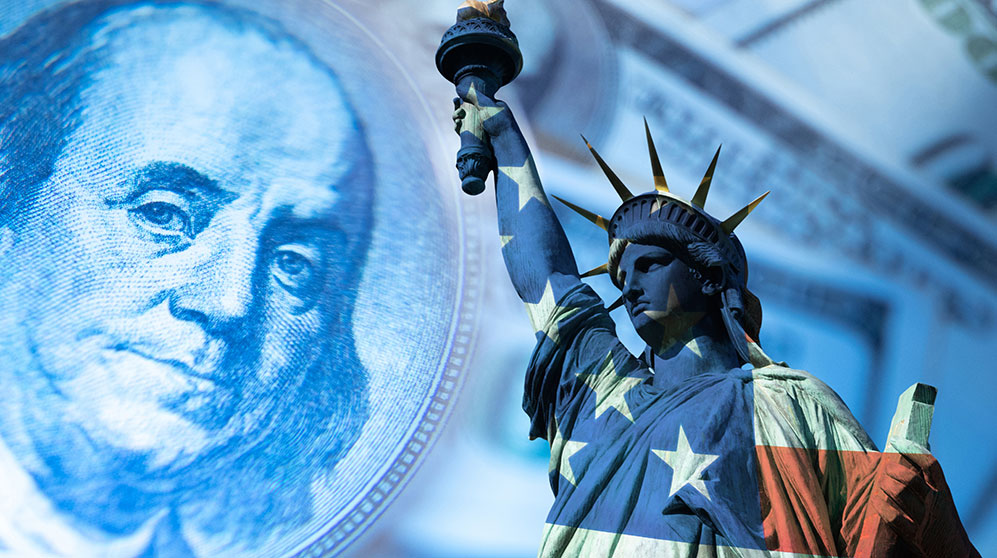Guessing Is Not a Sound Investment Strategy
• 3 min read

Get the Latest Research & Insights
Sign up to receive an email summary of new articles posted to AMG Research & Insights.

The U.S. economy is sailing into unchartered inflationary waters.
As AMG pointed out in its most recent webinar, Inflation & Recession: Today’s Reality and Tomorrow’s Possibilities, the U.S. Consumer Price Index (CPI)—the most widely accepted inflation gauge—is currently bifurcated. The CPI’s services component has been bad, bumping around the 6% range for months, but the goods portion has been even worse—north of 12%.
This bifurcation is a new phenomenon. Since post-World War II, all economic sectors have been impacted similarly during inflationary periods, and the Federal Reserve (Fed) has battled these outbreaks with its most powerful weapon—interest-rate hikes, which usually constrict the economy.
But this time around, events beyond the Fed’s control are key contributors to U.S. inflation as prices surged 9.1% in June, the highest level since 1981. Factors include:
- The ongoing Russo-Ukrainian war, which has helped dramatically drive up oil prices. Think $5 a gallon gasoline. The conflict has also pushed up the cost of grain, certain minerals and other forms of energy.
- Service-sector inflation has largely been spurred by worker shortages, wage increases, and pent-up demand for travel, leisure activities and health care procedures—all activities folks put off during the pandemic. Think long lines at the airport.
- Government relief packages during the pandemic helped create a surge in individual savings, estimated at more than $2 trillion. That means workers can retire early or delay re-entering the economy, which they apparently are doing. The United States has 11.3 million unfilled jobs, and employers are aggressively trying to fill those positions. Think wage increases.
These factors all fan the flames of inflation. And that leaves the Fed little choice but to break out its interest-rate club and start swinging, which it has been doing in recent months hoping to beat down rampaging consumer spending on both goods and services.
The strategy seems to be working. Higher interest rates appear to be reining in the runaway housing market. Inventory of available homes for sale is expanding, and double-digit price increases look to have slowed or even halted. Considering that shelter accounts for a third of the CPI, this bodes well for the future if rents level off as well.
But remember this is all guesswork, reading a crystal ball in an economic environment we have never seen before. And guessing is not a sound investment strategy. So, let’s wait and see if inflation’s momentum is indeed weakening before making any critical investment decisions.
This information is for general information use only. It is not tailored to any specific situation, is not intended to be investment, tax, financial, legal, or other advice and should not be relied on as such. AMG’s opinions are subject to change without notice, and this report may not be updated to reflect changes in opinion. Forecasts, estimates, and certain other information contained herein are based on proprietary research and should not be considered investment advice or a recommendation to buy, sell or hold any particular security, strategy, or investment product.
Get the latest in Research & Insights
Sign up to receive a weekly email summary of new articles posted to AMG Research & Insights.




